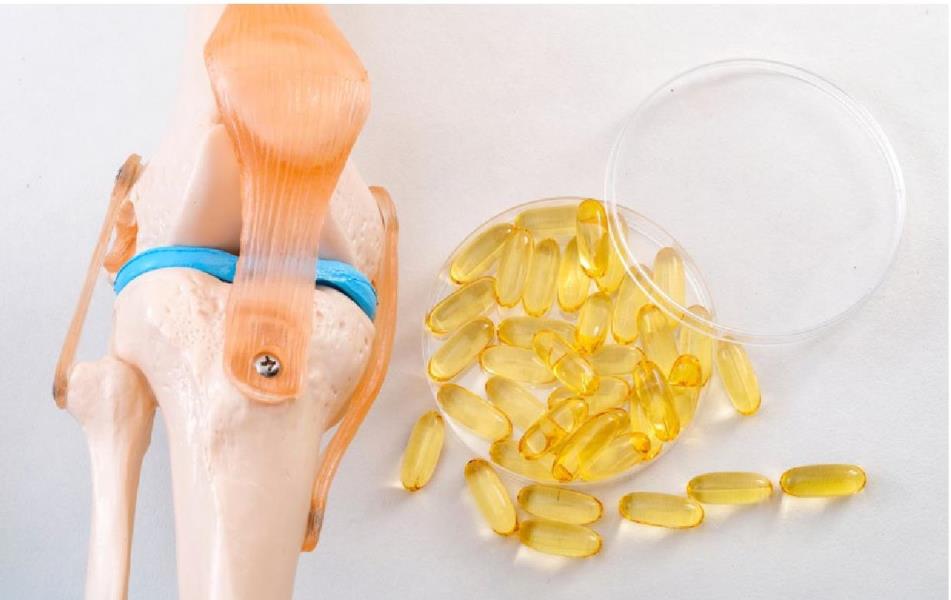
Reference: Omega-3 Supplementation and Its Effects on Osteoarthritis Nutrients 2024
The study’s objective was to assess evidence explaining the inflammatory processes of osteoarthritis and the influence of omega-3 supplementation to modulate the progression of osteoarthritis.
1. “Osteoarthritis (OA) is a degenerative joint disease characterized by the destruction of the articular cartilage, resulting in a pro-inflammatory response.”
2. “Osteoarthritis is the leading cause of disability globally.”
3. “The underlying etiology of osteoarthritis is not well understood; however, the common theme of inflammation remains omnipresent.”
4. “In recent years, diet and nutritional supplements have gained interest regarding slowing the disease process, prevention, and treatment of OA.”
5. “Omega-3 polyunsaturated fatty acids (PUFAs) have demonstrated an influential role in the progression of OA, resulting in the reduction of cartilage destruction, inhibition of pro-inflammatory cytokine cascades, and production of oxylipins [resolvins, protectins, and maresins] that promote anti-inflammatory pathways.”
6. “Omega-3 polyunsaturated fatty acids (PUFAs) are recognized for having anti-inflammatory properties and have demonstrated an influential role in the inflammatory and catabolic process that contributes to the disease progression of OA.”
7. Movement is necessary to provide water and nutrients to the deeper cartilage layers to maintain integrity. [Important for subluxation-based chiropractors]
8. Two well-known essential fatty acids that cannot be produced in the body are omega-3 (n-3) a-linolenic acid (ALA) and omega-6 (n-6) linolenic acid (LA).
9. Diets high in n-6 PUFA are correlated with inflammation.
10. Diets high n-3 PUFA show an anti-inflammatory effect.
11. Omega-6 arachidonic acid (ARA) is derived from n-6 PUFAs and is converted to pro-inflammatory cytokines and prostaglandins (PGE2) by cyclooxygenase-2 (COX-2).
12. Omega-3 PUFAs are metabolized to anti-inflammatory prostaglandins and to inflammation resolution molecules called resolvins.
13. Drugs are used to treat symptoms of osteoarthritis through suppression of COX and inflammatory PGEs.
These drugs have “limited symptom improvement and frequently reported side effects.”
14. “Acetaminophen and opioids have been prescribed; however, there is always the question of whether the risk of an unfavorable response outweighs the advantage of potential pain control.”
15. “With the limited success of pharmacological therapies, there has been a growing interest in nutrition-based interventions in the treatment of OA, specifically with the use of omega-3 PUFAs.”
16. “Omega-3 PUFAs are typically found in fatty fish, seafood, and dietary supplements; however, traditional Western diets typically have a greater concentration of omega-6 fatty acids, which compete for metabolic enzymes, potentially reducing the positive effects of omega-3 PUFAs.”
17. A ratio ofn-6/n-3 between 1:1 and 6:1 shows a significant reduction in cartilage degradation; there was no effect at a ratio of 10:1 or higher.
18. A traditional Western diet has an n-6/n-3 ratio of 22:1.
19. “Omega-3 PUFAs have demonstrated a reduction in inflammatory biomarkers and cartilage degradation, counteracting the natural disease state of OA.”
20. “Diet and nutrition have the potential to play an important role in pain control and functional activity tolerance in osteoarthritis.”
21. “The FDA has concluded that dietary supplements providing 5 g/d of EPA or DHA are considered safe if used as recommended.”

Dan Murphy, DC, has provided weekly reviews of pertinent articles for the chiropractic community for 25 years. Topics are wide-ranging and include nutrition, neurology, orthopedics, biomechanics, diet, exercise, immunology, whiplash injury, radiology, clinical anatomy, chiropractic care, and more. Here is what one subscriber said: “I am very grateful for keeping me in the loop of knowledge. These article reviews are priceless.” Interested chiropractors can sign up for this service on his website: www.danmurphydc.com.
References
1. Shawl M, Geetha T, Burnett D, Babu JR. Omega-3 supplementation and its effects on osteoarthritis. Nutrients. 2024 May 28; 16(11): 1650. doi: 10.3390/nul6111650. PMID: 38892583; PMCID: PMC11174396. _
 View Full Issue
View Full Issue









